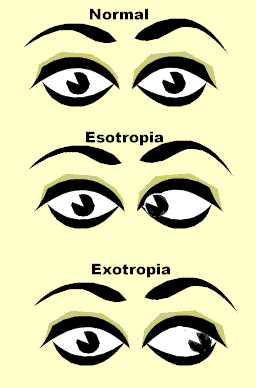![]()
![]()
Squint
|
Squint is also called as strabismus, or commonly 'cross-eyed'. It is the condition in which there is abnormal alignment of the eyes. Anatomical details of eye muscles There may be - Esotropia - eye turned inwards. Exotropia -eye turned outwards. Hypotropia - eye directed downwards. Hypertropia -eye directed upwards. Management -Role of Parents - By 3-4 months the baby's eyes should start working together. Look intently at the child. Is the point of light you see in each eye symmetrical? Does the child keep his head tilted? If the answers to above is yes, the child may be having squint. And you have smartly detected it early! Squint occurring in children should be shown to an eye doctor as early as possible. This is because vision development can occur only in childhood. Once a lazy eye develops, it is very difficult to set it right, after some time has elapsed. Even though, surgery may be done to reposition the eyes, the visual ability cannot be regained. Methods used are -
Good cosmetic appearance is very important in the child since 'normal appearance' will give him a positive self-image and better social acceptance. |
|
